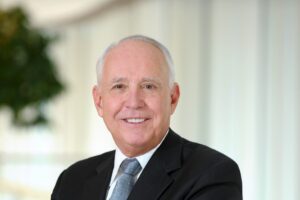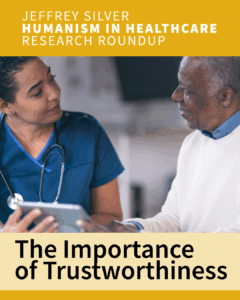 by Nina Stoyan-Rosenzweig
by Nina Stoyan-Rosenzweig
This post is part of our collection of “Gold Nuggets” — our way of alerting the medical community to original artwork, poetry or multimedia that stimulate discussion and reflection. If you have something you think would make for good discussion by the medical community, you can submit a Gold Nugget by following these instructions.
I teach several medical humanities classes– to medical students and undergraduates– and I lecture on the use of medical humanities in teaching humanism and clinical skills. In this process I’ve used some of the winning essays from the Gold Foundation’s Annual Essay Contest as a teaching tool because I’ve found them to be so very effective.
Why use medical student writing examples to teach medical students? The answer resides partly in the power, authority, and influence of a compellingly written narrative that brings a topic to life and finds a permanent place in the reader’s memory. They show rather than tell; instead of giving an order to remember the key points, they show why a behavior is significant.
Recently, a fourth-year medical student told me that he wished medical humanities classes were required at the University of Florida (where these classes are currently electives) because the effort of reading narratives, watching movies, and listening to patient stories helped to create a permanent reminder that patients are human beings with personal stories and real lives. The development of humanism in medicine requires that these lessons be firmly imprinted, since there are so many factors in medical training and medicine that can throw people off track. Only when the message includes a compelling story that produces an emotional response does it truly become a lesson to be remembered.
The answer also resides partly in the power, authority, and influence of medical students themselves. Undergraduates tend to admire medical students for having successfully navigated the required medical school hoops, and feel that medical students can be trusted (since students may perceive that certain professors or other authority figures may not truly be on a student’s “side”). Medical students also lack the intimidating level of authority of some professors.
Thus, a written message from another medical student is a wonderful teaching tool. It works especially well when the author illustrates key points in his or her medical training and emotional development as a physician. Such a message may also reflect some of the concerns that the readers have (as there is great power in not feeling “alone”). If such a message additionally provides a valuable piece of information on how better to interact with and treat patients, it is particularly powerful.
A number of the winning essays from the Gold Foundation’s Annual Medical Student Essay Contest have proved valuable in illustrating significant points. Links to the full text of the top 3 essays of each year can be found here. Here are two examples of essays I have taught:
- My Most Famous Patient by Amit V. Khera, 3rd year student at University of Pennsylvania School of Medicine
I use Khera’s essay primarily in a class for undergraduates who have been accepted into a 7-year undergraduate/medical school program. The course pairs the teaching of clinical skills with related humanities. Students do a Readers Theater depicting physicians who put aside their stereotypes in favor of truly seeing the patient, and then we discuss the essay. We also practice the exercise in Khera’s essay by asking each student to identify something about himself or herself that makes each of them famous. Thus, students come away with a practice that they can apply to their own patients– a reminder to ask patients about their life outside of the healthcare setting– and with substantial knowledge about how and why that practice can improve the physician-patient relationship. - An essay about the value of using art to teach observational skills by Eliza Miller, 2nd year student at Columbia University College of Physicians & Surgeons
This essay both illustrates the value of using art to enhance clinical observation skills, and comments on the ways in which art can humanize medicine. It provides a powerful reminder of the ways in which education can enhance or hinder the growth of humanism. As Eliza Miller wrote, “My reason points out that time constraints in medical training make this kind of learning far too inefficient. My heart argues that we cannot afford to ignore the lessons learned at the museum. If we neglect our creative learning process, we retreat, both from our patients and our humanity.”
Nina Stoyan-Rosenzweig serves as medical historian for the Health Science Center at the University of Florida and directs medical humanities programming in the College of Medicine. She is an advisor for the UF Gold Humanism Honor Society and works on a variety of programs and projects on topics ranging from eugenics to arts in traditional African healthcare systems to the use of medicinal plants in Harry Potter.



